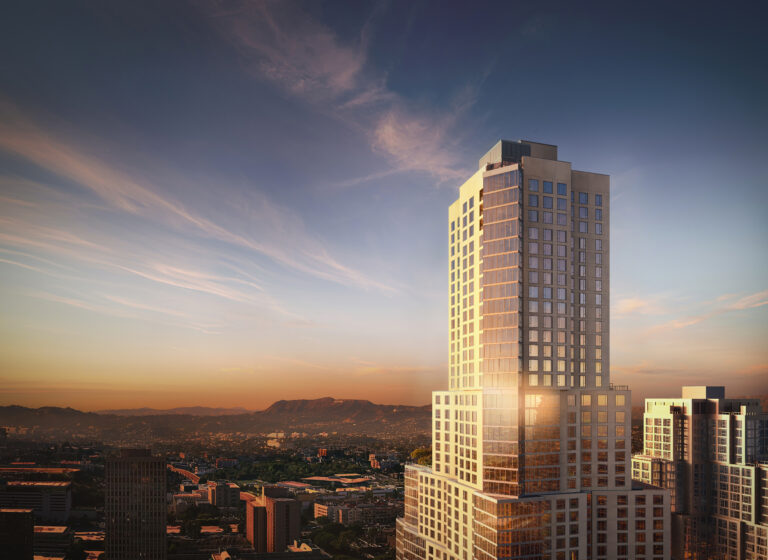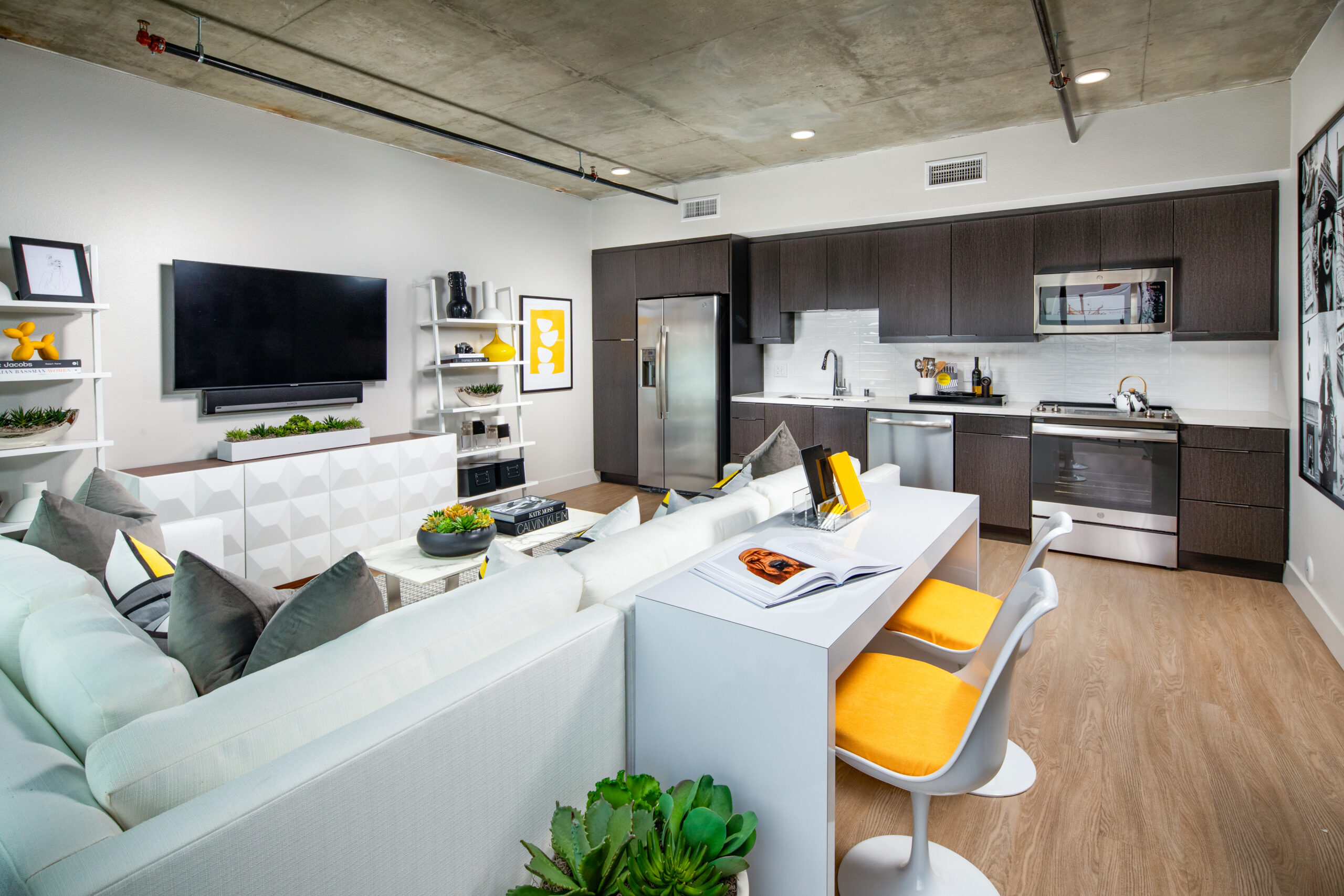
The downtown multifamily market had difficulties during the pandemic but has been recovering with occupancy and rental rates rebounding as rent concessions decrease.
“It’s safe to say downtown L.A. was hit harder by Covid than probably any other submarket in Los Angeles,” Peter Sherman, a principal at Avison Young Inc., said. “By way of comparison, you had multifamily occupancies that were dipping into the 80 percentile, you had many if not most properties that were offering concessions of two to three months and rents that dropped double digits to just keep people and have any type of retention in the tenancy.”
“Clearly they were ravaged during these last two years,” he said, adding that despite the difficulties seen, the market has since started recovering.
A Downtown Center Business Improvement District report found that apartment occupancy rates by the end of the year were at 93.5%, up from 86% the previous year and the average effective rent per unit was at $2,759, up from $2,363 the previous year.
“There’s an underlying reason for why multifamily has continued through this and that’s that there is continued real interest and demand for what downtown has to offer,” said Nick Griffin, DCBID’s executive director. “We expect that to continue and as the pandemic eases off, we’re going to see another surge in development.”
As of the end of 2019, apartments were 85.7% occupied with an effective rent of $2,686.
Erica Finck, a director at Cushman & Wakefield, described the market as “fully recovered,” adding that “the fundamentals are better now than they were pre-Covid.”
Concessions
And experts agree that while concessions were higher downtown early in the pandemic, they are starting to subside. Concessions are used to encourage people to sign leases and often include free rent.
“It’s waned a bit,” Laurie Lustig-Bower, an executive vice president at CBRE Group Inc., said. “The concessions got as strong as some buildings had to give two months free rent plus free parking. That was the worst of it. Now my clients are telling me that they’re able to charge for parking and eliminated one of those months. In some cases, they are still needing to offer one month free but not all the buildings are giving concessions.”
Griffin agreed, adding that rents being as strong as they are now and low vacancy rates have decreased the necessity of concessions.
“While there may be some still out there, it’s a much less significant part of the market,” he said. “The inventory, the supply is being absorbed. There isn’t as much of a need. There were a lot of concessions in the midst of the pandemic and people got some good deals but that’s not going to be a big part of the equation moving forward.”
Development
There are currently more than 4,500 units under construction and another nearly 32,000 units proposed, according to DCBID data.
Finck said she expects all the new units to be absorbed in the market.
“People were really concerned about supply five, six, seven years ago but all of that product has been absorbed,” she said. “There is a housing shortage in California and in L.A. in general and there is no shortage of demand for great product in great locations.”
Griffin said some large projects, like The Grand, are nearing completion and a new wave of construction will start as well.
“You have what’s becoming a very tight market with very strong demand and partly because the pandemic slowed some projects, you don’t have a huge amount coming online in the short term. So those projects will do very well and lease-up quickly. There’s room in the pipeline for additional inventory and we’ll see new projects being started,” he said.
Sherman agreed that some of the deliveries have been slowed which benefitted some projects.
“Downtown got a little bit of assistance with some of those supply delays but so far at least in this bounce back for a handful of properties that have come online, the absorption has actually looked pretty decent,” Sherman said.
Lustig-Bower said the market will take a while to absorb all of the new supply that is coming online but there still wasn’t enough housing for everyone who works in downtown and L.A. as a whole has a huge housing shortage.
“It’s just a matter of time, those units will be absorbed,” she said, adding that traffic and the “cool factor” of living downtown has made people want to live there.

But there are some concerns over high building costs.
“In order to build the buildings that are typically being built in downtown L.A., you have to be able to achieve a certain dollar per square foot of rent,” Sherman said. “A handful of years ago you needed to be able to get $4 a square foot. … Now with the higher construction costs, it’s $5 a square foot and you’re seeing some of the rents at those levels get achieved.”
Sales coming
Multifamily sales were slow during the pandemic.
“If you take a look at 2021, downtown L.A. didn’t have a lot of sales. There were five or six sales of multifamily properties over 100 units and that’s a small number in comparison when you look at some of the other big markets in L.A.,” Sherman said. “Some of that is the disequilibrium at the time, some of it is investor disinterest and concern. But frankly, I think that sellers don’t want to sell from a position of weakness. My assumption is that as the market stabilizes you’re going to see more sales.” Other agents agree.

“The last 24 months have been very difficult for landlords and tenants both, a lot of landlords have spent the last two years playing defense…but because rental rates have surpassed where they were pre-pandemic and the fundamentals are strong, I expect some of those same landlords…to cash out while the fundamentals are in a good place and they can get a great price,” Finck said.
She added that a lot of buyers are expressing interest in the market when opportunities come online.
Lustig-Bower agreed, adding that with softening rents early in the pandemic, owners held on to their properties, but she expects more to come online now.
